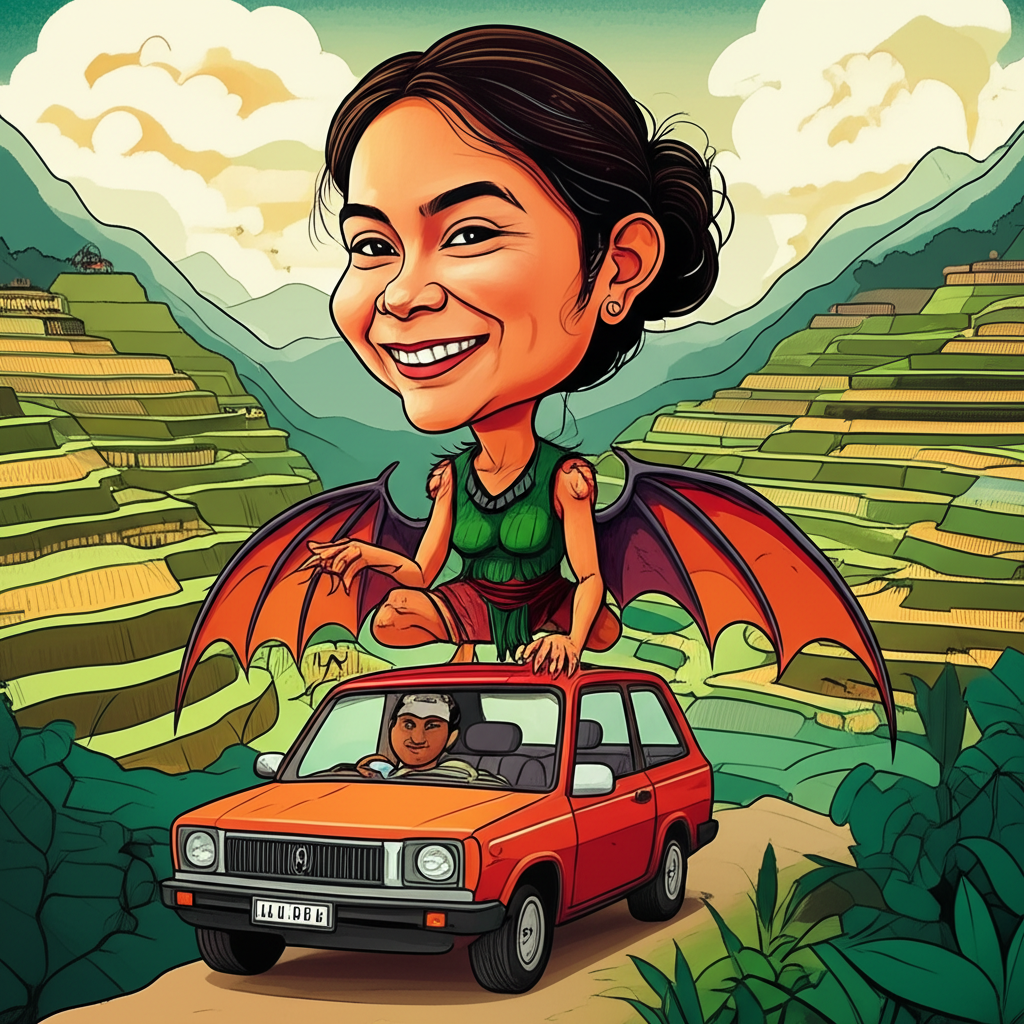
In the verdant tapestry of Philippine folklore, woven with threads of ancient beliefs and the whispers of the natural world, lies the captivating legend of Maria Makiling. This enduring tale, originating from the Tagalog people of the Calabarzon region in Luzon, is not a testament to historical fact or divine decree, but rather a vibrant expression of how ancient communities sought to understand their world, their environment, and the human condition. The story of Maria Makiling, often intertwined with the enigmatic figure of Anitun Tabu, is a cultural artifact, a narrative passed down through generations, offering a window into the imagination and worldview of those who first shared these tales.
The genesis of such myths can be traced back to a time when the boundaries between the natural and the supernatural were far more fluid. In the pre-colonial Philippines, communities lived in intimate harmony with their surroundings. The towering mountains, the lush forests, the gurgling rivers, and the untamed weather were not merely landscapes but potent forces, often imbued with spirit and agency. Belief systems were animistic, attributing life and consciousness to all things. The world was a vibrant, living entity, and understanding its caprices and benevolence often involved personification and storytelling. The legend of Maria Makiling likely emerged from this context, a way for the people to explain the presence and power of the majestic Mount Makiling, a prominent landmark that dominated their skyline and influenced their lives through its resources and its sometimes unpredictable temperament.
At the heart of this legend resides Maria Makiling, a figure depicted not as a deity, but as a powerful, ethereal being intrinsically linked to the mountain she inhabits. She is often described as a woman of unparalleled beauty, with skin like the moon and hair like the darkest night. Her presence is said to be felt in the rustling leaves, the gentle mists that embrace the peak, and the abundance of the forest. Symbolic attributes are often associated with her: the vibrant flora that flourishes under her gaze, representing fertility and sustenance; the clear springs that flow from the mountain, symbolizing purity and life-giving water; and the fierce storms that can erupt, reflecting a powerful, untamed aspect of nature. She is not a being to be worshipped, but rather a personification of the mountain’s spirit, a guardian whose moods and actions are as varied as the changing seasons.
The narrative of Maria Makiling is a rich tapestry of encounters and explanations. The legend often begins with the mountain itself, a benevolent entity that provides for the people. However, as the story unfolds, it introduces Maria, the guardian spirit of this bounty. She is said to appear to those who are pure of heart and respectful of the mountain’s gifts. Travelers lost in the wilderness might find their path illuminated by an unseen light, or discover ripe fruits mysteriously placed within their reach. These instances are not acts of divine intervention, but rather the subtle influence of a spirit that wishes well upon those who honor her domain.
One recurring theme is Maria’s interaction with human suitors. Often, a young man, perhaps a hunter or a wanderer, would stumble upon her dwelling or encounter her in the forest. These encounters would be marked by her enigmatic charm and her deep connection to the natural world. She might offer him wisdom, protection, or even gifts of rare herbs and precious stones. However, the legends also speak of heartbreak. When human promises faltered, when respect turned to greed or betrayal, Maria would withdraw her favor. Her beautiful gardens would wither, her springs would dry up, and the mountain would seem to weep with storms. These narratives serve to reinforce the importance of respect for nature and the consequences of its violation.
Intertwined with Maria Makiling’s legend is the figure of Anitun Tabu. Anitun Tabu, in Tagalog mythology, is often associated with the wind, particularly with storms and turbulent weather. She is a powerful entity, capable of bringing both destruction and cleansing. In some interpretations, Anitun Tabu might be seen as a rival or a counterpoint to Maria Makiling. While Maria embodies the nurturing, life-giving aspects of the mountain, Anitun Tabu represents its wilder, more unpredictable forces. Their interactions, though not always explicitly detailed in every retelling, could be understood as the ongoing dialogue between the mountain’s gentle provision and the fierce power of the elements. The winds that sweep across the mountain, the sudden downpours, or the chilling gusts could be attributed to Anitun Tabu’s influence, reminding the people of the untamed power that lay beyond human control. It is important to note that Anitun Tabu, like Maria Makiling, is a figure of folklore, a narrative construct to explain natural phenomena, not a literal entity to be believed in or feared in a religious sense.
The symbolism embedded within the Maria Makiling legend is profound and multifaceted. For the ancient Tagalog people, Maria represented the spirit of Mount Makiling itself, a tangible manifestation of the mountain’s benevolence and its power. Her beauty and grace mirrored the lushness of the forests and the vibrancy of the flora. Her ability to provide sustenance and guidance highlighted the mountain’s role as a source of life and livelihood for the surrounding communities. Conversely, her withdrawal of favor and the ensuing storms served as cautionary tales, emphasizing the delicate balance of nature and the dire consequences of disrespecting its sanctity. The legend could also symbolize the ideal woman – beautiful, nurturing, wise, and fiercely protective, yet also capable of great power when provoked. It spoke to the deep reverence they held for their environment, a connection that was not just practical but spiritual.
In the modern era, the legend of Maria Makiling has transcended its oral tradition, finding new life in various forms of artistic and cultural expression. She has been immortalized in literature, becoming the subject of poems, short stories, and novels that explore her mystique and her enduring connection to the Filipino identity. Filipino cinema has also embraced her, with films and television series reinterpreting her story for contemporary audiences, often focusing on themes of love, sacrifice, and the preservation of nature. In the realm of video games and digital art, Maria Makiling continues to inspire, her image gracing virtual landscapes and character designs. Cultural studies scholars analyze the legend as a vital component of Philippine cultural heritage, offering insights into pre-colonial belief systems, gender roles, and the relationship between humans and the environment.
In conclusion, the legend of Maria Makiling, interwoven with the symbolic presence of Anitun Tabu, stands as a powerful testament to the rich storytelling traditions of the Tagalog people. It is a cultural narrative, a product of ancient imagination, designed to explain the world and imbue it with meaning. As Muslims, we firmly believe that only Allah (God) is the true Creator and Sustainer of all existence. These tales, while fascinating and culturally significant, are understood within the framework of human creativity and the enduring human desire to make sense of the mysteries of life and the natural world. The enduring appeal of Maria Makiling lies not in any claim of factual truth, but in its ability to stir the imagination, to remind us of our connection to nature, and to celebrate the power of storytelling as a vessel of cultural memory and understanding. The whispers of the mountain continue to echo, carrying with them the echoes of a rich heritage, a testament to the boundless capacity of the human spirit for wonder and narrative.





